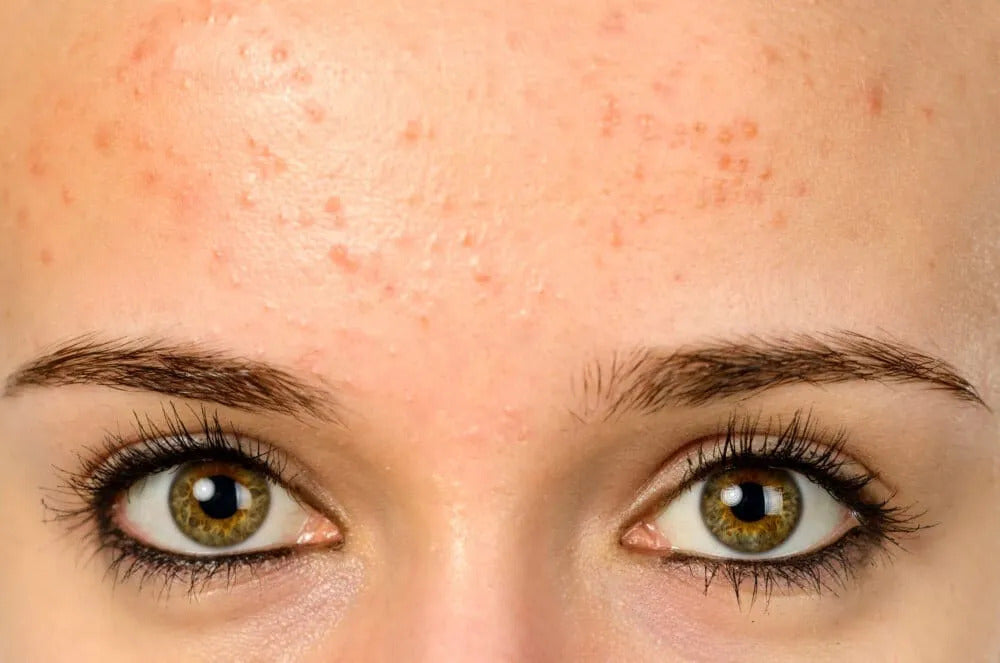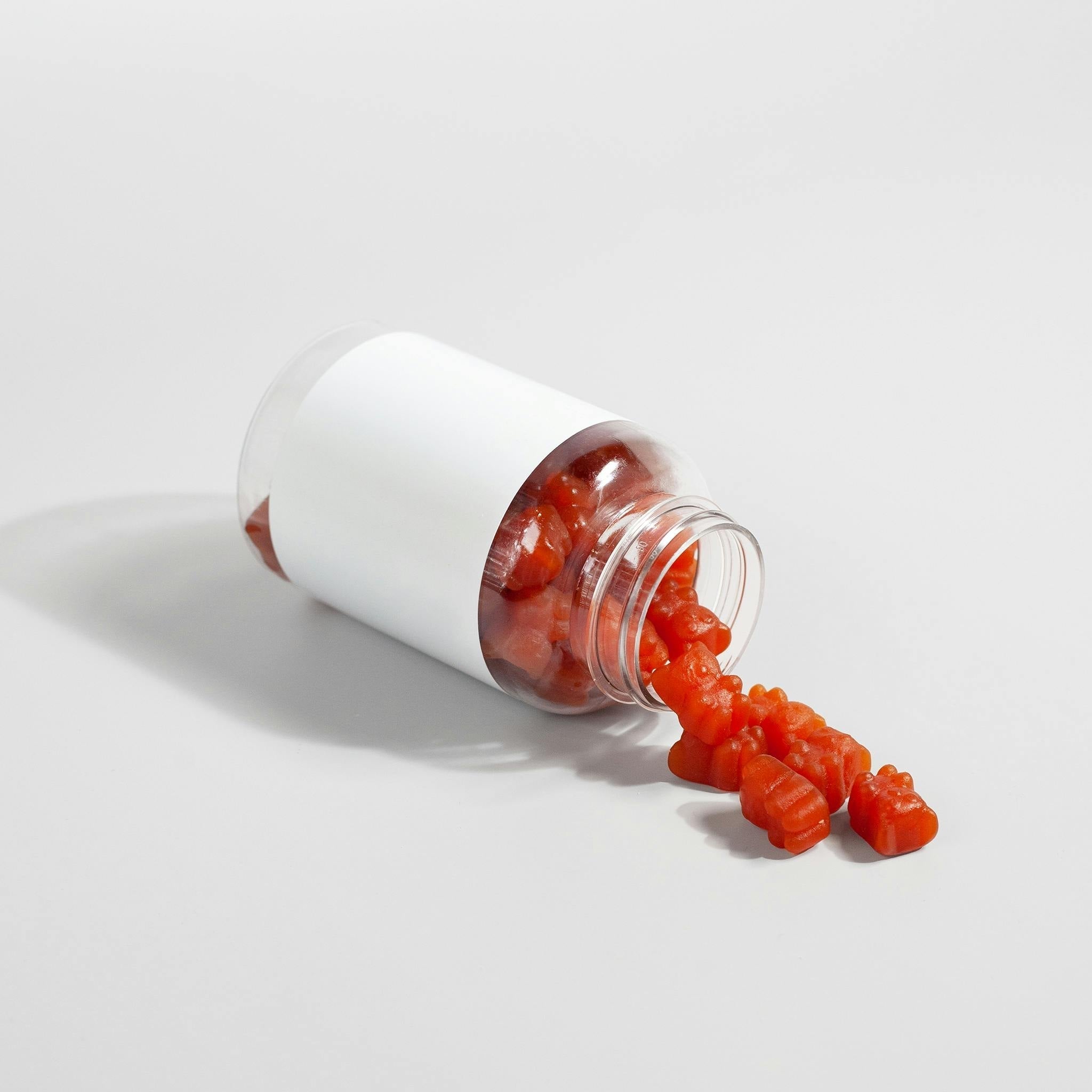All You Need to Know About Fungal Acne

Key Summary
-
Fungal acne (Malassezia folliculitis) is caused by yeast overgrowth, not bacteria.
-
Common symptoms include clusters of small, itchy, red bumps, often appearing on the forehead, chest, and back.
-
Easily mistaken for traditional acne, but does not respond to typical acne treatments.
-
Main triggers include excessive sweating, humid environments, antibiotic use, and occlusive skincare products.
-
Effective treatments involve antifungal medications, proper skincare routines, and lifestyle adjustments.
-
Preventative measures include wearing breathable fabrics, avoiding oil-heavy products, and maintaining good hygiene.
-
Consulting a skincare expert can help with persistent cases and tailored treatment plans.
Fungal acne is often mistaken for traditional acne, but it’s actually caused by an overgrowth of yeast, not bacteria. This condition, known as Malassezia folliculitis, results in small, itchy, red bumps that commonly appear on the forehead, chest, and back. Since it doesn’t respond to typical acne treatments, understanding its causes, symptoms, and the right skincare approach is key to effective management. This guide will help you identify fungal acne, differentiate it from bacterial acne, and explore the best treatment options to keep your skin clear and healthy.
What Is Fungal Acne?
Fungal acne, scientifically known as Malassezia folliculitis, is a skin condition caused by an overgrowth of yeast in hair follicles. Unlike traditional acne, which results from clogged pores and bacterial infections, fungal acne occurs due to an imbalance of the skin’s microbiome. This condition often leads to persistent breakouts that do not respond to typical acne treatments.
What Does Fungal Acne Look Like?

Fungal acne presents as small, red, itchy bumps that are uniform in size. These breakouts often appear in clusters on the forehead, chest, back, and shoulders. Unlike bacterial acne, fungal acne does not typically develop blackheads or deep cysts. If you’re unsure whether your breakouts are fungal or bacterial, check out our guide on bacterial acne and fungal acne.
Causes of Fungal Acne

1. Excess Sweat and Humidity
Sweaty environments create an ideal breeding ground for yeast overgrowth, leading to fungal acne.
2. Tight, Non-Breathable Clothing
Wearing synthetic fabrics can trap moisture, encouraging fungal growth on the skin.
3. Antibiotic Use
Long-term use of antibiotics can disrupt the balance of bacteria and fungi on the skin, leading to an overgrowth of Malassezia yeast.
4. Oily Skin & Heavy Skincare Products
Thick, occlusive products can feed yeast and trigger fungal acne flare-ups.
5. Compromised Immune System
Individuals with weakened immune systems are more susceptible to fungal acne.
6. Frequent Use of Occlusive Hair & Skincare Products
Hair pomades, thick moisturizers, and oil-based sunscreens can contribute to fungal acne breakouts.
7. Excessive Sweating Post-Workout
Not showering or changing after workouts can lead to yeast buildup on the skin, increasing the risk of fungal acne.
Who Is Prone to Fungal Acne?
Fungal acne is more common in individuals who:
-
Live in hot, humid climates
-
Sweat excessively
-
Use antibiotics frequently
-
Have oily or acne-prone skin
-
Wear tight, synthetic clothing regularly
How to Tell if You Have Fungal Acne
Fungal acne is often mistaken for bacterial acne. Here’s how to differentiate:
-
Bacterial acne features whiteheads, blackheads, and cysts, varying in size and depth.
-
Fungal acne appears as itchy, uniform red bumps, often in clusters on oily areas like the forehead, chest, and back.
If you're still unsure, read our guide on how acne starts for more insights.
Fungal Acne Treatment: How to Get Rid of It
1. Antifungal Treatments
-
Topical antifungals (ketoconazole, selenium sulfide) help kill yeast on the skin.
-
Oral antifungal medications may be prescribed for severe cases.
2. Lifestyle Changes to Prevent Fungal Overgrowth
-
Wear breathable clothing and shower after sweating.
-
Avoid oil-heavy skincare products.
-
Incorporate probiotic-rich foods to support skin health.
For more acne management tips, check out our acne prevention guide.
Best Skincare Routine for Fungal Acne
A well-structured skincare routine can help keep fungal acne under control while maintaining a healthy skin barrier. Here’s what to include:
1. Cleanser
Opt for a gentle yet effective antifungal cleanser containing pyrithione zinc, ketoconazole, or salicylic acid. These ingredients help reduce yeast overgrowth while preventing clogged pores. Wash your face twice daily, especially after sweating, to keep the skin fresh and clean.
2. Treatment Creams and Serums
Incorporate a targeted antifungal treatment into your routine, such as a cream or serum containing ketoconazole, clotrimazole, or sulfur. These active ingredients effectively combat Malassezia yeast, helping to reduce inflammation and prevent further breakouts. For a natural alternative, spot treatments with tea tree oil or raw honey may offer soothing relief. Since different skin types respond differently, consulting a dermatologist can help you choose the most effective treatment for your specific needs.
3. Moisturiser
 IS Clinical Moisturising Complex 50g
IS Clinical Moisturising Complex 50g
Choose a lightweight, non-comedogenic moisturizer that hydrates without feeding yeast. Look for gel-based formulas with ingredients like niacinamide, hyaluronic acid, or ceramides to support the skin’s barrier while avoiding heavy oils that may exacerbate fungal acne.
4. Sunscreen

Propaira SPF50+ Water Resistant Dry Touch Body Sunscreen
Protect your skin with an oil-free, non-comedogenic sunscreen to prevent sun damage and irritation. Mineral sunscreens with zinc oxide or titanium dioxide are great options as they help control excess oil and inflammation without clogging pores.
When to Seek Professional Help for Fungal Acne Treatment
If your acne doesn’t improve with home remedies or over-the-counter antifungals, it may be time to see a professional. A dermatologist or skincare expert can provide targeted solutions and advanced treatments.
Hydrate and Heal Your Skin with Expert Guidance at Skin to Heart
Struggling with fungal acne? The right treatment plan makes all the difference. At Skin to Heart, our skin experts provide customised solutions like facial treatments and skin peels to address your concerns and restore balance to your skin. Whether you need a targeted antifungal skincare routine or an advanced consultation, we're here to help. Book a consultation today and start your journey to clear skin!
Frequently Asked Questions About Fungal Acne
Is fungal acne the same as regular acne?
No, fungal acne is caused by yeast overgrowth, while regular acne results from clogged pores and bacterial infections.
Can fungal acne be mistaken for other skin conditions?
Yes, it is often confused with bacterial acne or allergic reactions due to its similar appearance.
Can diet affect fungal acne?
A diet high in sugar and processed foods may contribute to fungal overgrowth, while probiotics and antifungal foods can help manage symptoms.
How long does it take for fungal acne to clear up?
With proper treatment, fungal acne can improve within a few weeks, but long-term maintenance is crucial.
Do common acne treatments make fungal acne worse?
Yes, traditional acne treatments like benzoyl peroxide and antibiotics may not work on fungal acne and can sometimes exacerbate the issue.
Can using too many skincare products cause fungal acne?
Yes, overuse of occlusive or oil-based products can create an environment that promotes fungal growth.
Get expert skincare advice and explore our recommended acne treatments for clearer, healthier skin!
0 comments


